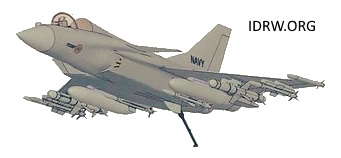SOURCE: AFI

The Aeronautical Development Agency (ADA) is reportedly working on a two-pronged approach for the Twin Engine Deck Based Fighter (TEDBF) program, catering to both the current and future needs of the Indian Navy. This development signifies a significant step towards bolstering India’s naval aviation capabilities.
The TEDBF program will prioritize the development of a Short TakeOff But Arrested Landing (STOBAR) variant, aligning with the existing capabilities of India’s current aircraft carriers, INS Vikramaditya and INS Vikrant. This variant will utilize a ski-jump ramp for takeoff and arresting gear for landing, seamlessly integrating with the operational infrastructure.
However, the future holds an exciting development with the proposed IAC-III aircraft carrier, also known as INS Vishal. This behemoth is envisioned as a 65,000-ton CATOBAR (Catapult Assisted TakeOff But Arrested Landing) variant. To leverage the full potential of this new carrier, the ADA is simultaneously developing a CATOBAR variant of the TEDBF.
The CATOBAR system utilizes a catapult to launch aircraft, enabling them to carry heavier payloads of weapons and fuel. This translates to greater operational range, flexibility, and overall strike power for the TEDBF when deployed on IAC-III.
The development of both STOBAR and CATOBAR variants ensures a smooth transition for the Indian Navy as it adopts the more advanced CATOBAR technology. Pilots can train and operate the STOBAR variant on current carriers while the CATOBAR variant is readied for deployment on IAC-III.